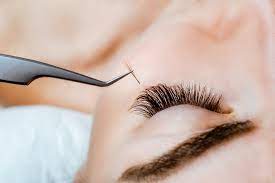or David Butler, it began with a knock on the door early one November morning, seven years ago. When he opened it, officers from the Merseyside police were standing on his doorstep. The retired taxi driver was being arrested for murder.
The police said they had evidence connecting Butler to the death of Anne Marie Foy, a 46-year-old sex worker who had been battered and strangled in Liverpool in 2005.
Butler’s DNA, it turned out, had been logged into the UK national database after a 1998 investigation into a break-in at the home he shared with his mother. A partial match had been made to DNA found on Foy’s fingernail clippings and cardigan buttons. This, combined with CCTV evidence of a distinctive taxi seen near the scene, led the prosecutor to tell the jury in Butler’s trial that the DNA information “provides compelling evidence that the defendant was in contact with Anne Marie Foy at the time immediately before she died”.
The case seemed conclusive. Yet Butler was adamant: he had not met Foy.
“You do see an assumption being made that a DNA profile is evidence of contact – case closed – whereas it is actually a lot more complicated than that,” says Ruth Morgan, the director of the Centre for the Forensic Sciences at University College London. “We are only beginning to realise quite how complex it is.”
Since DNA was first used in a police investigation 31 years ago, to solve the murder of Dawn Ashworth, a 15-year-old schoolgirl who was raped and strangled in Leicestershire, the technique has attained an aura of being bulletproof. Certainly, in some cases, evidence of a DNA match to a suspect can be powerful. “There will be times when you get a really clear [DNA] profile, and it is very clear how that material got to the crime scene. And it is [also] very clear that it was during the course of an illegal activity,” says Morgan. “The classic [example] would be semen on the clothing of someone who is underage.”
But Butler’s case is just one of many that highlight growing questions in the world of forensic science: what exactly are fingermarks, DNA or gunshot residue actually evidence of – particularly now that even tiny traces can be detected?
It’s a riddle whose answer may have profound consequences. According to research published by Morgan and her colleagues, rulings for 218 successful appeal cases in England and Wales between 2010 and 2016 argued that DNA evidence had been misleading, with the main issues being its relevance, validity or usefulness in proving an important point in a trial.
It is not the first time forensic science has come under scrutiny. In 2015, the FBI and co-authors released a report that put the final nail in the coffin of hair analysis, while the matching of fingermarks (found at crime scenes) and fingerprints (taken from suspects) has also been in the spotlight.
In a seminal paper from 2005, the neuroscientist Itiel Dror and colleagues revealed that, in the case of ambiguous marks, those examining the evidence could be swayed in their conclusions by the context of a case, with a match more likely to be made when the crime had been depicted as harrowing.

After initial resistance, the impact of such work has been dramatic. “Fingermarks are now presented in court in a completely different way – it is really, really rare that you get someone saying unequivocally: ‘This is an identification,’” says Morgan.
But with technology now allowing the recovery of minute traces of DNA, new challenges have arisen. Not only is it often unclear whether trace DNA is from skin cells, saliva or some other body fluid, but such DNA samples often contain material from multiple individuals, which is difficult to tease apart.
What’s more, working out when the DNA was deposited, and for how long it might have been present, is an enormous problem. “If you get a mixed profile on an item of clothing, is the major profile the last person who wore it, or is it somebody who regularly wore it?” Morgan asks.
And it gets more complicated. “In different scenarios, some people leave DNA and some people don’t,” she says. Indeed, studies from several groups have looked at a number of factors affecting how much DNA is left behind, which can be influenced by such things as how long it was since somebody washed their hands and which hand a person touched an object with. And some people simply shed more. “We’ve had some experiments where the person whose DNA we were looking for left either a partial profile or not really a viable profile – but there was other DNA [from a person] who we were able to identify as a close partner who hadn’t touched the item; they hadn’t been in the lab.”
To Butler, such issues proved pivotal. The DNA samples from Foy’s nails were a complex mixture of profiles and only a partial match was found with Butler’s DNA. Further analysis of the initial examination notes also revealed that Foy had been wearing glittery nail varnish. “That is going to retain more DNA for a longer time because there is more opportunity; more things for it to stick to,” says Sue Pope, a DNA expert who worked on the case, and is now co-director of Principal Forensic Services Ltd.
And there was another significant factor: Butler had a condition which led to him having flaky skin. “He was depositing a lot more cells that you might expect from a single touch,” says Pope. The findings, argued the defence, meant that Butler’s DNA could have found its way on to Foy’s hands and hence her clothing by entirely innocent means – for example by Foy handling coins that had previously been touched by Butler. After eight months on remand, Butler was acquitted.
The case exemplifies the puzzles Morgan and her colleagues are hoping to tackle by means of a host of experiments, from looking at how DNA can be transferred between individuals to how long particles such as quartz grains can cling to footwear – an important consideration given that the shape and texture of such grains can be linked to specific environments. “One poor student had to wear the same pair of shoes most days for four months,” says Morgan.
The results were intriguing. The outsides of the shoes showed a rise in particular types of quartz grain as the student visited each of five known locations, with the quantity of each type dropping off over time. At the end of the study, grains from just two locations were found on each shoe.
But there was a surprise. “Inside [the shoe] we had every single location,” said Morgan. That, counterintuitively, means the inside of a pair of shoes could offer up more clues than the outside when it comes to tracing a suspect’s movements.
Meanwhile, research by the team carried out after the Rotherham abuse scandalnot only revealed that DNA from semen could be found on clothes laundered several months after the fluid was deposited, but also threw up another result. “We found the ‘suspect’s’ DNA on other items that had never had any of that bodily fluid on them, indicating you are getting transfer in a washing machine,” says Morgan.










